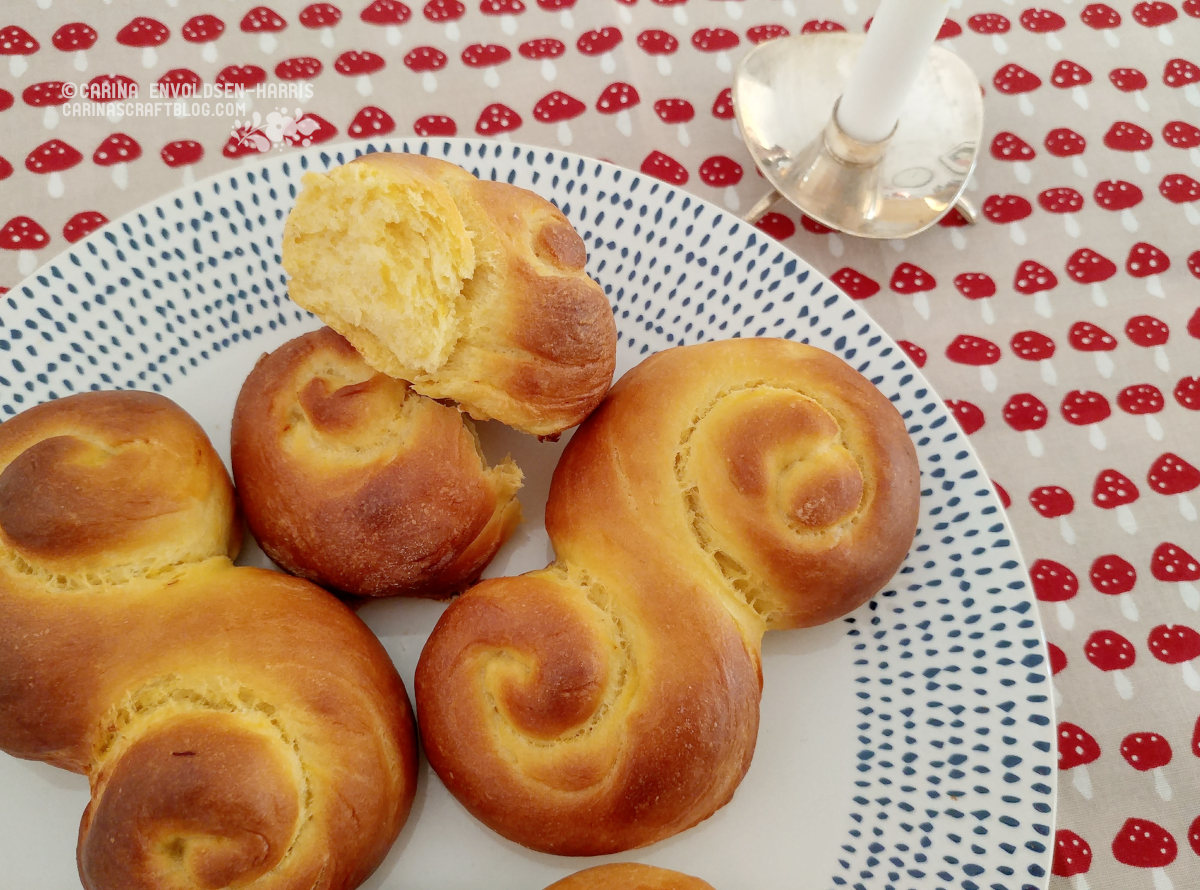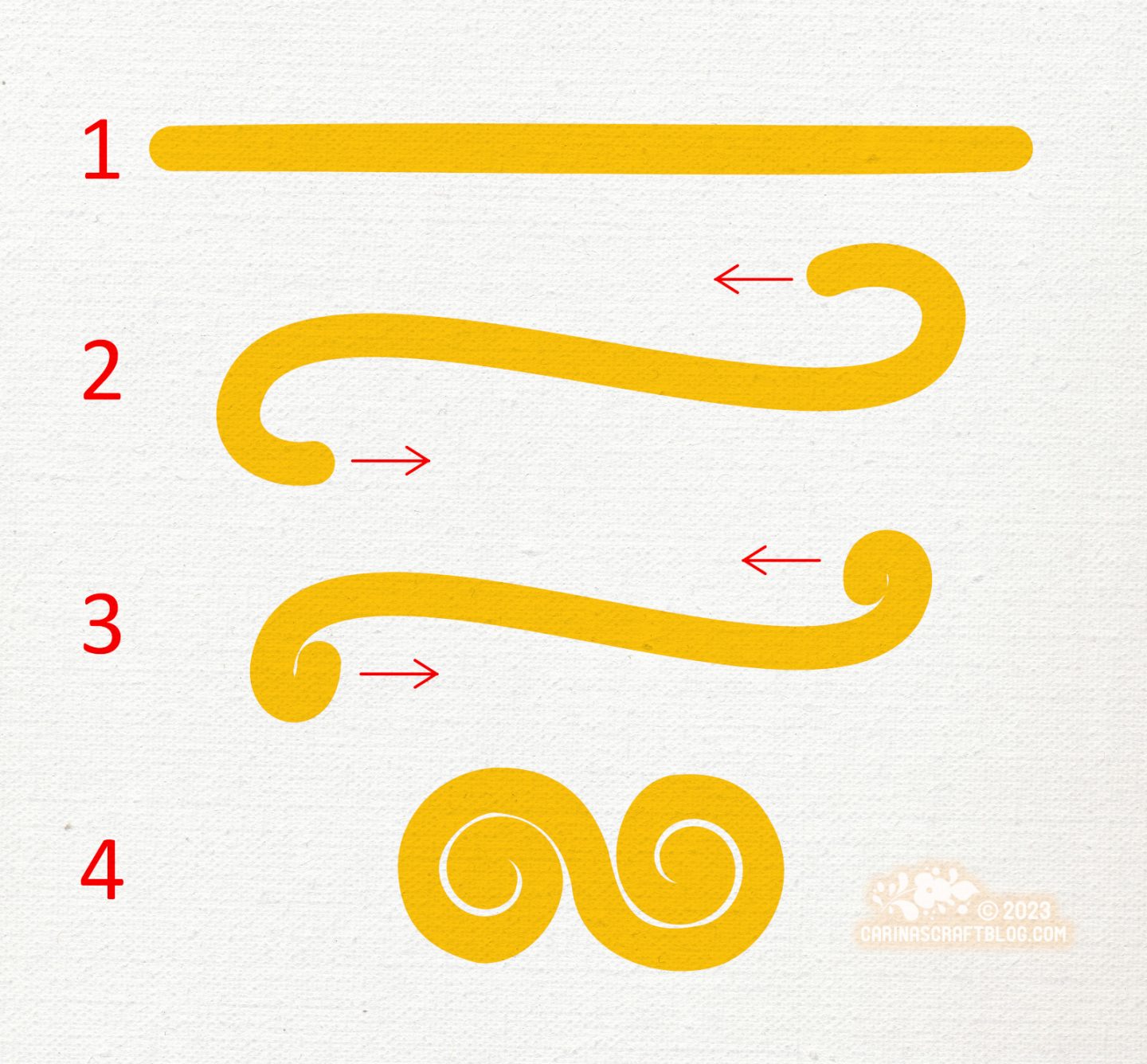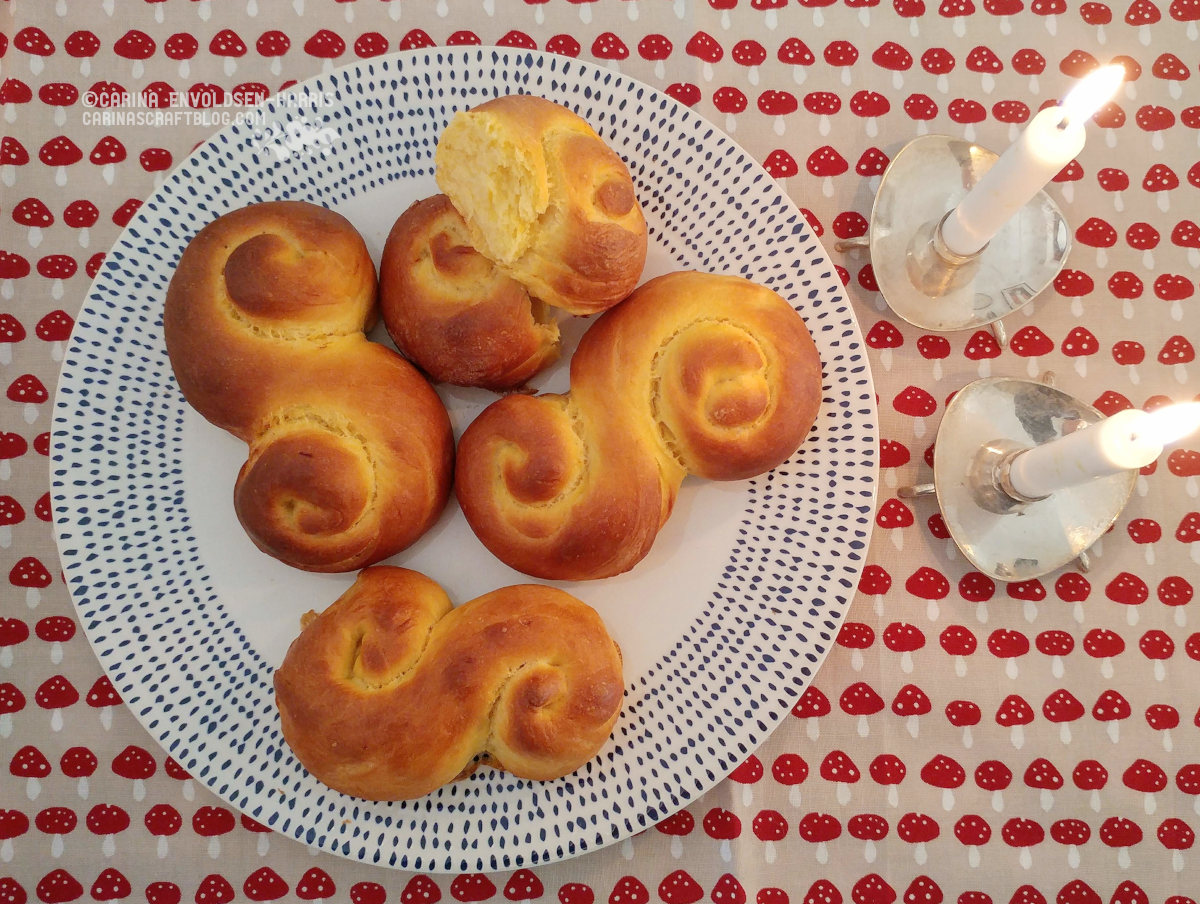
For several years I have had a new tradition: for breakfast on December 13th, St Lucia’s day, I make these Swedish saffron buns called lussekatter. They are really delicious. And the most delightful yellow colour!
Maybe you would like to try them too? :-)
Makes 16 buns
Ingredients:
75 grams vegan butter or margarine (I use Naturli’ block)
250 ml vegan milk (plus a bit extra for brushing)
4 grams dry yeast (check on the packet if it needs to be reactivated first)
1/4 tsp salt
85 grams sugar
0.5 grams of saffron* powder (use strands if powder is not available)
410 grams of flour (a bit extra if the dough feels wet)
Raisins or sultanas (I have also used cranberries), you will need two per bun.
*The saffron gives a particular flavour, it is not just used for the yellow colour. Do NOT substitute saffron for turmeric.
Method:
Melt the butter with half of the milk. When the butter is melted, take off the heat and add the saffron. Leave to cool for 5-10 minutes, then add the rest of the milk. It is ready to use when it is about 35°C. If you have a cooking thermometer, use that, otherwise, stick your little finger in the liquid and if it feels like it is approximately the same temperature as the finger, it’s ready to use.
In a large bowl, mix the dry yeast with a quarter of the flour and the butter+milk liquid. Leave for the yeast to start to do its thing. Once you see tiny bubbles in the mix, add the rest of the flour, sugar and salt.
Work the dough until it is smooth. Add extra flour a bit at a time if the dough seems wet.
Drizzle a tiny bit of oil into the bowl and roll the dough in the oil (this will prevent the dough from going dry while rising.)
Cover the bowl with a slightly damp tea towel and leave the dough to rise until it has doubled in size (about 45-60 minutes). If you want to speed up this process, place the bowl over another bowl that you fill with warm (not hot!) water. The water bowl should only be about ¼ filled with warm water and the dough bowl should not touch the water.
When the dough has doubled in size, sprinkle a bit of flour on your work surface and cut the dough into 16 pieces.

Roll each of the pieces into a long sausage shape, about 30 cm long and 1.5 cm thick. Shape each sausage into the classic lussekatt shape (other shapes are available, do an Internet search.)
Place the lussekatter evenly on two baking trays with baking paper. Cover with slightly damp tea towels and leave to rise until they have almost doubled in size. (About 45 minutes.)
At this point I like to put my raisins in a small bowl and just cover them with water. This will help them not go too dry and hard when baked.
Pre-heat the oven to 220°C.
When the lussekatter have almost doubled, brush them with milk and gently press a raisin in the swirls at each end of them.
Bake in the middle of the oven for 8-10 minutes until they are just golden. Depending on the plant milk you have used, where that is brushed on may look more brown/burnt. Check the bottoms of the buns. If they sound hollow when tapped, the buns should be ready. If they don’t sound hollow, put them back in the oven for a few more minutes but not for too long!
Enjoy! And god jul!

